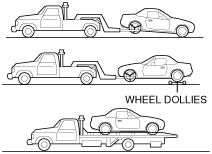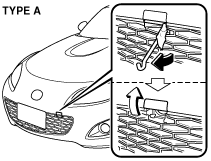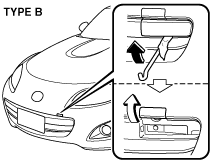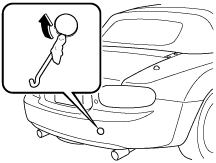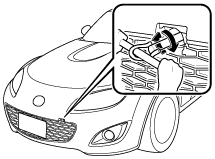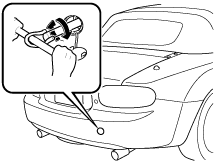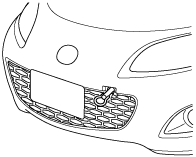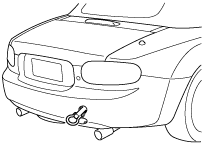TOWING
id000000001000
Towing
Vehicles without active bonnet
• Proper lifting and towing are necessary to prevent damage to the vehicle.
Government and local laws must be followed.
• A towed vehicle usually should have its drive wheels (rear wheels) off the ground. If excessive damage or other conditions prevent this, use wheel dollies.
-
Caution
-
• Do not tow the vehicle pointed forward with driving wheels on the ground. This may cause internal damage to the transmission.
-
Caution
-
• Do not tow with sling-type equipment. This could damage your vehicle. Use wheel-lift or flatbed equipment.
• If towing service is not available in an emergency, the vehicle may be towed with all four wheels on the ground using the towing hook at the front of the vehicle.
Only tow the vehicle on paved surfaces for short distances at low speeds.
-
Caution
-
• Follow these instructions when towing the vehicle with all wheels on the ground.
-
1. Shift to neutral (MT), or the N position (AT).
2. Switch the ignition to ACC to prevent the steering from locking up.
3. Release the parking brake.
• Remember that power assist for the brakes and steering will not be available when the engine is not running.
Vehicles with active bonnet
• A towed vehicle usually should have its drive wheels (rear wheels) off the ground.
-
Caution
-
• If a vehicle with the active bonnet is towed using a rope, the active bonnet could deploy by mistake. When towing a vehicle with the active bonnet always load the vehicle on a flatbed wrecker, secure the vehicle so that it does not move, and disconnect the negative battery cable.
Towing Hooks
-
Caution
-
• The towing eyelet should be used in an emergency (to get the vehicle out of a ditch or a snow bank, for example).
• When using the towing eyelets, always pull the cable or chain in a straight direction with respect to the eyelet. Apply no sideways force.
• For Australian specs. Do not use the tiedown hooks under the front and rear for towing.
they are designed ONLY for tying down the vehicle when it is being transported. Using them for towing will damage the bumper.
-
Note
-
• When towing with chain or cable, wrap the chain or cable with a soft cloth near the bumper to prevent damage to the bumper.
1. Wrap a screwdriver or similar tool with a soft cloth to prevent damage to the painted bumper and open the cap located on the front bumper.
-
Caution
-
• Do not use excessive force as it may damage the cap or scratch the painted bumper surface.
• The rear bumper cover cannot be removed completely. Attempting to forcefully remove the rear bumper cover could result in it being damaged.
-
Note
-
• Remove the front bumper cover completely and store it so as not to lose it.
Front
Rear
2. Securely install the towing eyelet using the screwdriver or similar tool.
Front
Rear
3. Hook the towing rope to the towing eyelet.
-
Caution
-
• If the towing eyelet is not securely tightened, it may loosen or disengage from the bumper when towing the vehicle. Make sure that the towing eyelet is securely tightened to the bumper.
Front
Rear
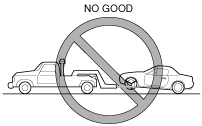 amxzzw00002013
amxzzw00002013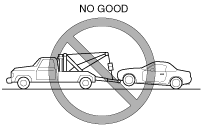 amxzzw00002014
amxzzw00002014